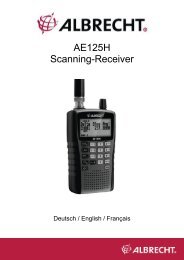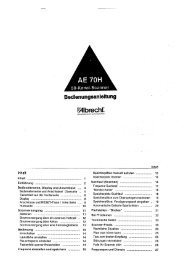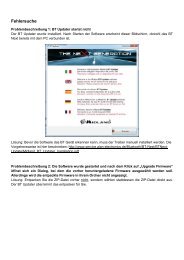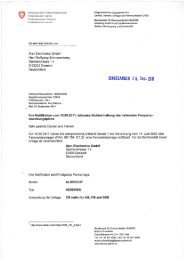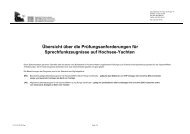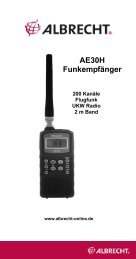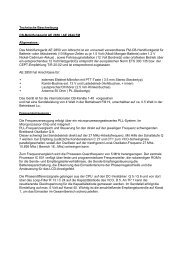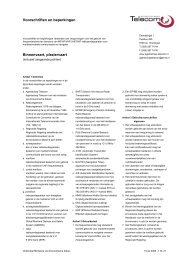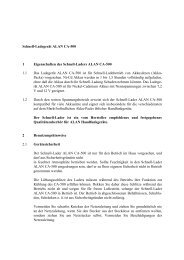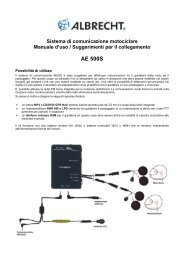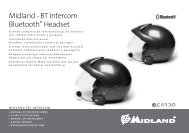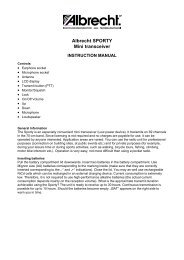ALAN 8001S EURO
ALAN 8001S EURO
ALAN 8001S EURO
Create successful ePaper yourself
Turn your PDF publications into a flip-book with our unique Google optimized e-Paper software.
direction of the body of the vehicle. For all pratical purposes, however, the radiation pattern<br />
is nondirectional. The slight directional characteristic will be observed only at extreme<br />
distances. A standard antenna connector (type SO 239) is provided on the transceiver for<br />
easy connection to a standard PL 259 cable termination. If the transceiver is not mounted<br />
on a metal surface, it is necessary to run a separate ground wire from the unit to a good<br />
metal electrical ground in the vehicle. When installed in a boat, the transceiver will not<br />
operate at maximum efficiently without a ground plate, unless the vessel has a steel hull.<br />
Before installing the transceiver in a boat, consult your dealer for information regarding an<br />
adequate grounding system and prevention of electrolysis between fittings in the hull and<br />
water.<br />
TUNING THE ANTENNA FOR OPTIMUM SWR<br />
Since there is such a wide variety of base and mobile antennas, this section will strictly<br />
concern itself to the various types of mobile adjustable antennas. Because the antenna<br />
length is directly related to the channel frequency, it must be tuned to resonate optimally<br />
all 40 channels of the transceiver. Channel requires a longer antenna than Channel 40<br />
because it is lower in frequency. Due to the various methods of adjusting antennas for<br />
proper SWR we have chosen what we think is the optimum method:<br />
A. Antennas with adjustment screws (set screws).<br />
. Start with the antenna extended and tighten the set screw lightly enough so that the<br />
antenna can be lightly tapped with your finger for easy adjustment.<br />
2. Set your transceiver to Channel 2.0. Press the PTT (push-to-talk) switch, and tap<br />
the antenna (making it shorter). The SWR meter will show a lower reading each time<br />
the antenna is tapped. By continuing to shorten the antenna you will notice the SWR<br />
reading will reach a low print and then start rising again. This means that you have<br />
passed the optimum point for Channel 20. Adjust the antenna and again follow the<br />
procedure above.<br />
B. Antennas which must be cut to proper length.<br />
. Follow the same procedure as above, but adjust the length by cutting 2/3 mm increments<br />
until a good match is obtained.<br />
2. Be very careful not to cut too much at a time, as once it is cut, it can no longer be<br />
lengthened.<br />
3. The whip is easily cut by filling a notch all the way around and breaking the piece off<br />
with pliers.<br />
If you are having difficulties in adjusting your antenna, check the following:<br />
A. All doors must be closed when adjusting the antenna.<br />
B. Make sure the antenna base is grounded.<br />
C. Check your coaxial cable routing (it may be pinched when routed into the car).<br />
D. Try a different location on your car (keeping in mind the radiation pattern you wish).<br />
E. Is the antenna perfectly vertical?<br />
F. Try a different location in your neighbourhood. Stay away from large metal objects when<br />
adjusting (metal telephone or light posts, fences etc.)<br />
WARNING: The transceiver will operate into a SWR of 2 to 1 indefinitely and sustain a<br />
SWR of 20: for a maximum of 5 minutes at rated operating conditions.<br />
3<br />
E N G L I S H



